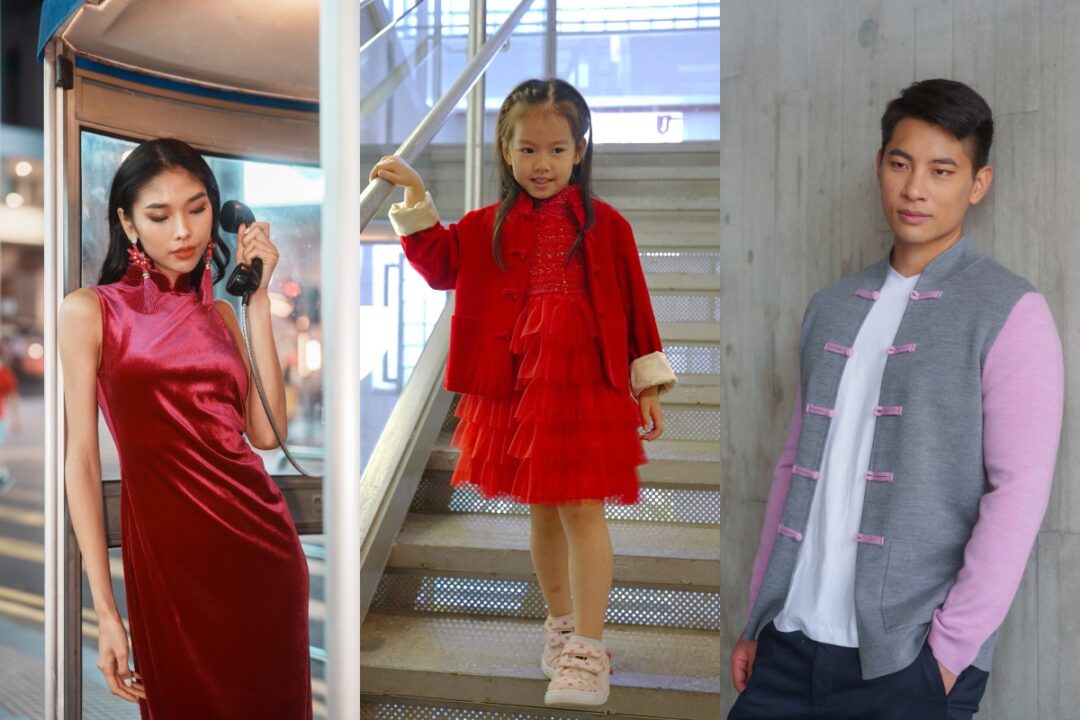In Collaboration With Qipology
Chinese New Year, a festival steeped in rich traditions and cultural significance, is not just about family reunions and delicious food; it’s also a time to embrace traditional costume that reflects the grandeur of Chinese heritage. To welcome the year of the dragon, which falls on 10 February this year, learn about Chinese New Year outfits and clothes, ensuring you’re splendidly dressed for the occasion.
What are traditional Chinese clothings?
Looking to immerse yourself in the festival spirit by wearing traditional Chinese clothing? Here are four types of garments to consider:
Hanfu (漢服)
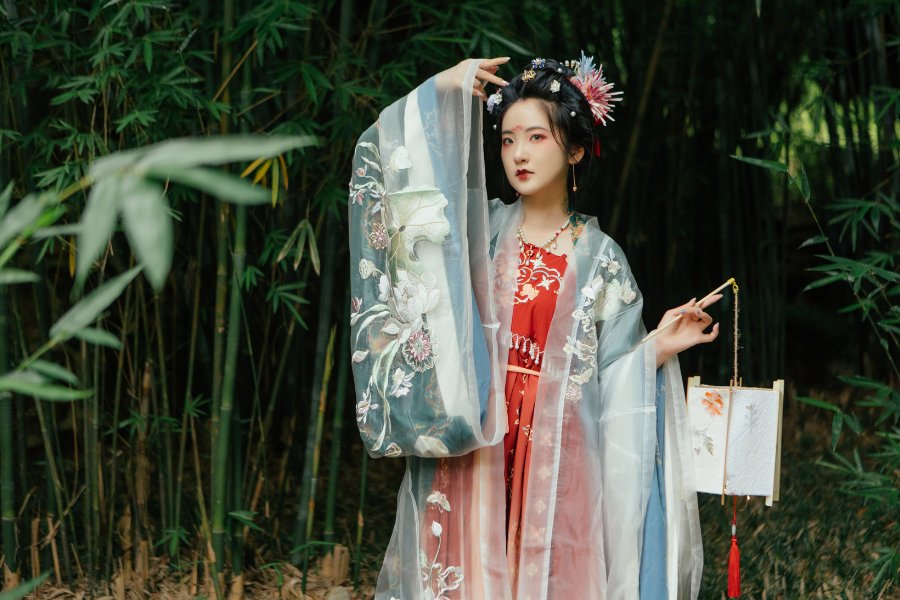
With a history dating back over 4,000 years, hanfu is the perfect example of traditional Chinese costume. Characterised by an open cross-collar, full-body robes, and intricate accessories, hanfu is simple yet elegant. Thanks to Chinese social media platforms like Douyin and Xiaohongshu, this style of dresses is now popularly worn not just for festivals and weddings, but also as a fashionable choice for photos.
Qipao & Cheongsam (旗袍 & 長衫)
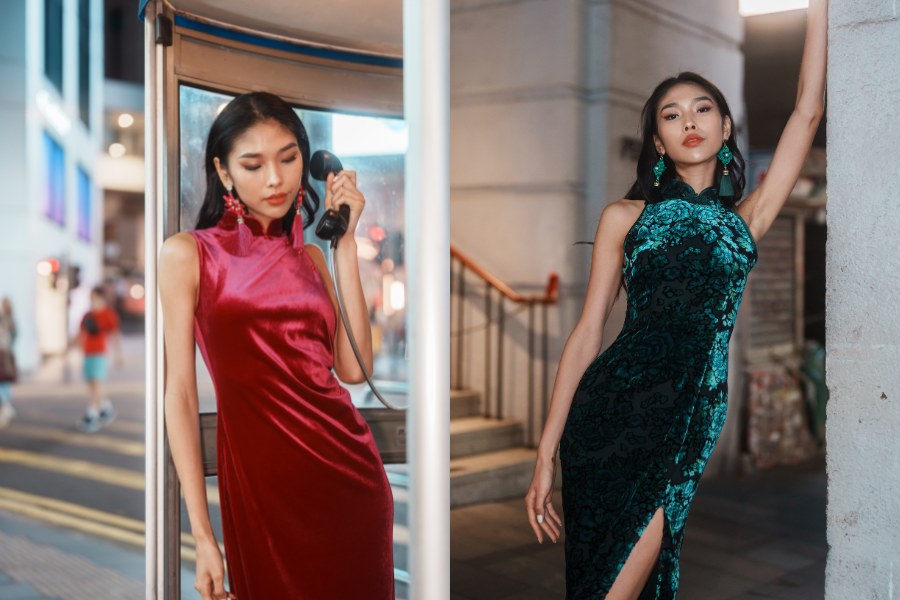
Qipao, known for its form-fitting elegance, evolved from the Manchu women’s long gown, or cheongsam. The dress beautifully merges traditional Chinese aesthetics with modern styles, evident in variations like the Beijing, Shanghai, and Hong Kong designs. Today, qipao is a popular choice for festive occasions, embodying grace and cultural pride.
Tang Suit or Tang Zhuang (唐裝)
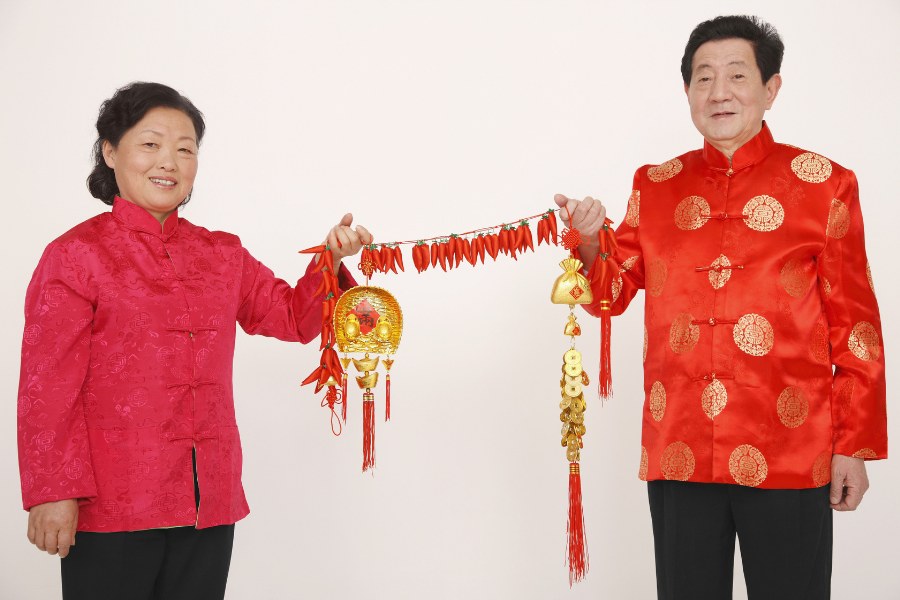
The Tang suit (or Tang Zhuang in Mandarin), typically a jacket with a Mandarin collar and frog buttons, originated not from the Tang Dynasty but from the Manchurian magua (馬褂). Often decorated with auspicious symbols and Chinese characters, it is commonly worn by both men and women for significant events, including Chinese New Year.
Zhongshan Suit (中山裝)
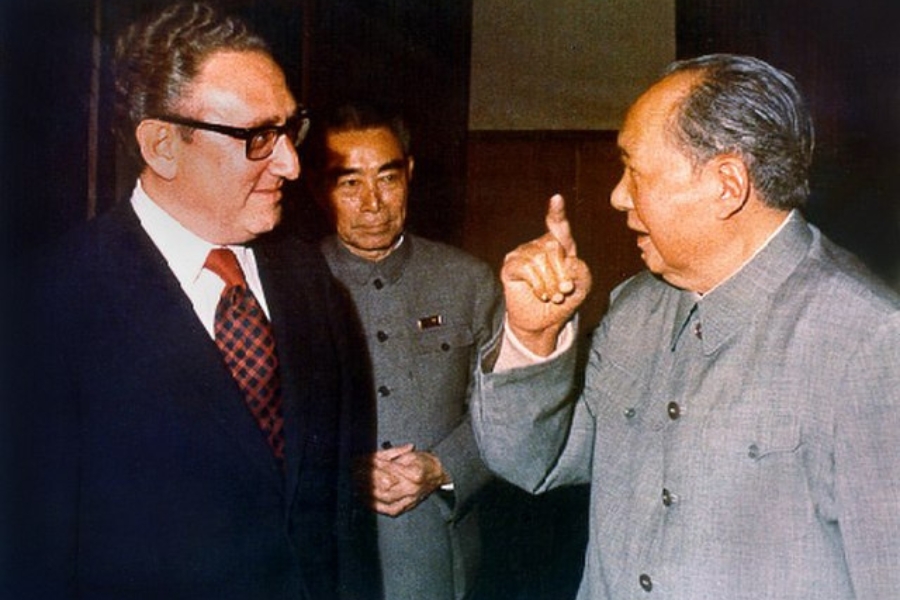
Dr. Sun Yat-sen, the former president of the Republic of China and known in Mandarin as Sun Zhongshan, is credited with creating the Zhongshan suit, also popularly referred to as the “Mao suit”. This attire has soon become the chosen outfit among politicians, including Chinese political leaders like President Xi Jinping. Characterised by its four practical pockets across the chest and waist, along with a stand-up collar, the Zhongshan suit is suitable for both formal and casual occasions for men. Its symmetrical design and subtle, plain colours ensure a dignified appearance for those who appreciate understated elegance.
What colours to wear during Lunar New Year
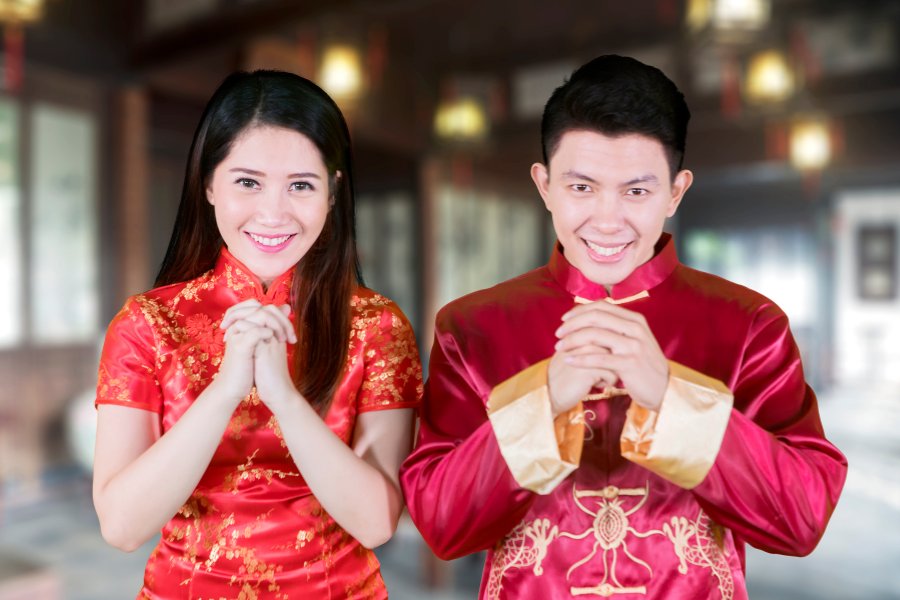
In places where Lunar New Year is celebrated, ringing in the new year goes beyond making resolutions—it’s all about making a fresh start, ensuring good luck and fortune for the coming year. When it comes to clothing, people also love to wear the “right colours” during the 15-day celebration, even if they’re not opting for traditional Chinese costume.
- Red for Prosperity: Red, the quintessential Chinese lucky colour, is a must-have in your New Year wardrobe. It is believed to bring strength and prosperity, particularly for those born in the year of the current Chinese zodiac. As the New Year dawns, people often wear red from head to toe — including red underwear, thought to bring additional luck in games and mahjong.
- Gold for Opulence: If red feels too bold, gold is an excellent alternative. Symbolising wealth, prosperity, and fortune, gold reflects the royalty and supremacy of emperors throughout Chinese history. It’s believed that yellow and gold also represent the spiritual realm. Whether it’s white gold, rose gold or yellow gold, gold-coloured attire or gold-tone accessories can add a touch of sophistication to your New Year’s look.
- Yellow for Power: According to the Chinese Five Elements theory, red, yellow, and green are auspicious colours, with yellow representing the earth element. This prestigious colour, once dedicated exclusively to the emperor, symbolises prosperity, hope, royalty, and power. It was commonly found in the emperor’s attire and imperial places like The Forbidden City.
What to avoid wearing during Chinese New Year
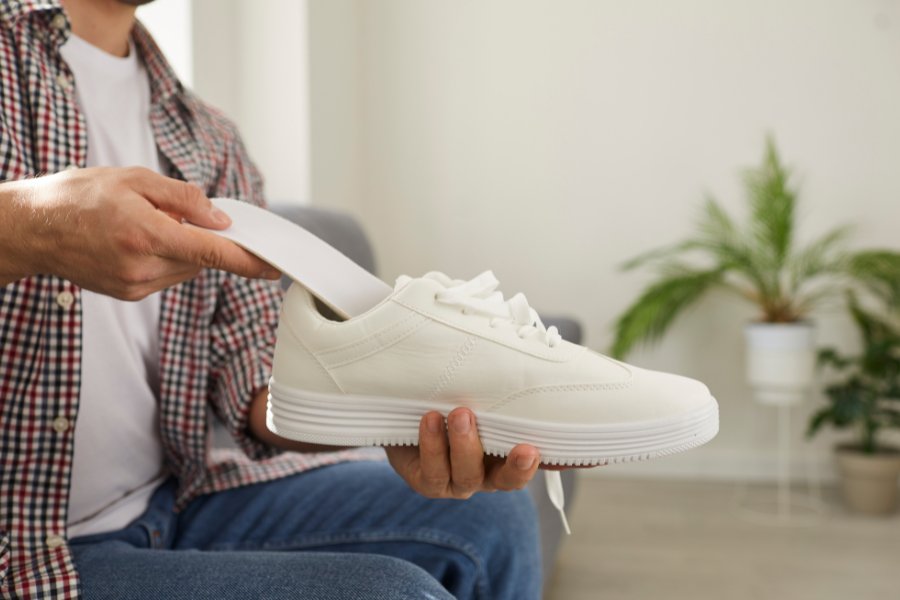
In Chinese society, many believe it’s important to “get things right” on the first day of the new year, as it’s thought to set the tone for the year ahead. So, we share some long-standing taboos to help you strike the right note for the Year of the Dragon!
- Avoid all white or black: Wearing white or black during Lunar New Year can lead to disapproving looks from elders, and for good reason. In Chinese culture, wearing all-white (or all-black) is a symbol of loss and mourning, usually reserved for funerals. Wearing these two colours on CNY is deemed unlucky for the celebrations.
- New shoes: In Hong Kong, the Cantonese word for “shoes” (haai, 鞋) sounds like “sighing” (aai, 唉), leading to the belief that buying shoes brings bad luck, suggesting a rough, bumpy year ahead. This also applies to gifting shoes to others.
- No damaged clothes: As Chinese New Year is a significant festival in most Asian communities, wearing torn or damaged clothing is thought to attract bad luck for the rest of the year. To welcome good fortune and show respect at the start of the new year, ensure your outfit is in perfect condition.
Where to shop Qipao & Cheongsam in Hong Kong?
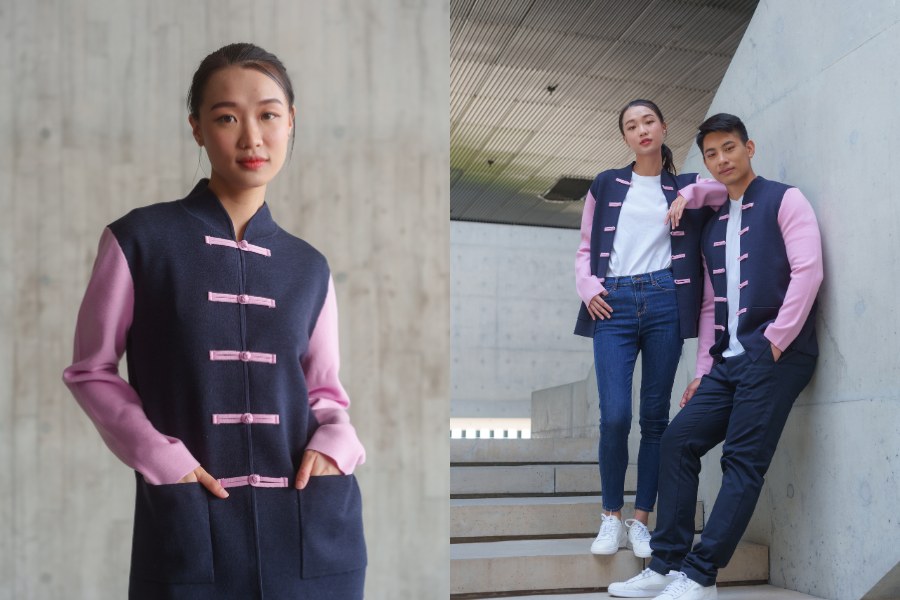
Looking to join the festivities with a new look? In Hong Kong, you can find traditional Chinese costumes at many places closer to the festival. Other than ordering from Taobao or visiting your favourite shopping mall, consider visiting night markets or street markets like Pottinger Street in Central, Ladies’ Market in Mong Kok, and Stanley Market in Stanley, or Chinese department stores such as Yue Hwa in Jordan. Moreover, it’s impressive to see many local fashion brands modernising Chinese qipao and cheongsam, making them more accessible not only for Lunar New Year but also for daily wear.
Qipology, a modern Oriental fashion brand based in Hong Kong, rejuvenates the traditional cheongsam with a contemporary twist while maintaining exquisite craftsmanship. For the Lunar New Year, their CNY knitwear collection features stylish color-block knit Tang jackets in 100% merino wool, available in adult and kids’ sizes. Besides casual styles, they also offer modern qipaos for special occasions. Visit Qipology’s Central shop and online store to find out more!
Shop: H314, Block B, PMQ, 35 Aberdeen Street, Central
Contact: Website | Instagram | Facebook | +852 6061 4074
Header image credit: Qipology


